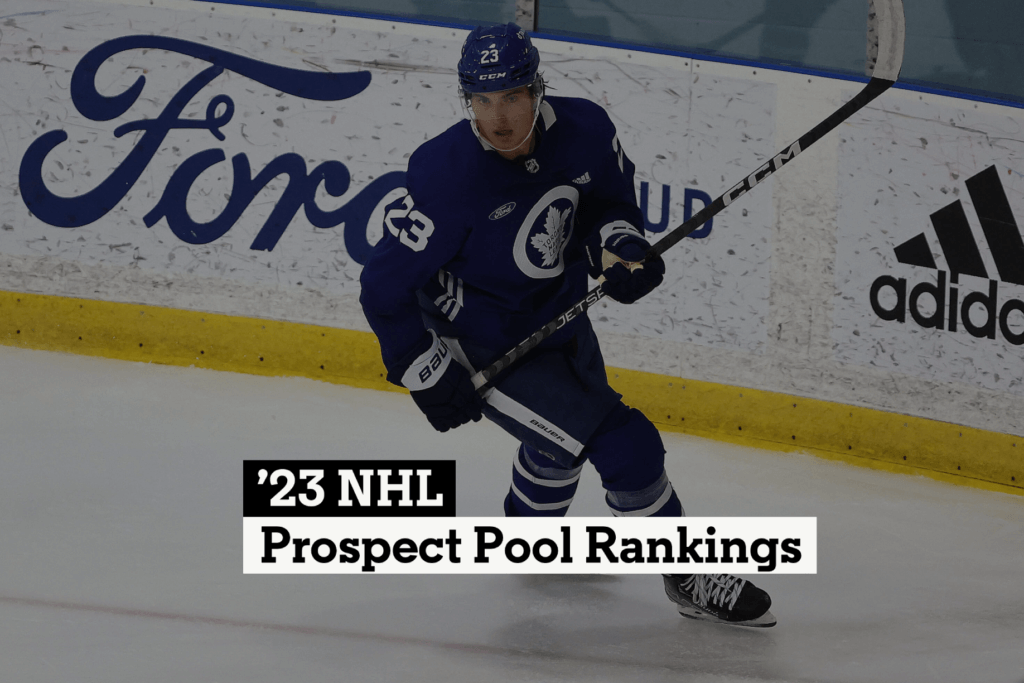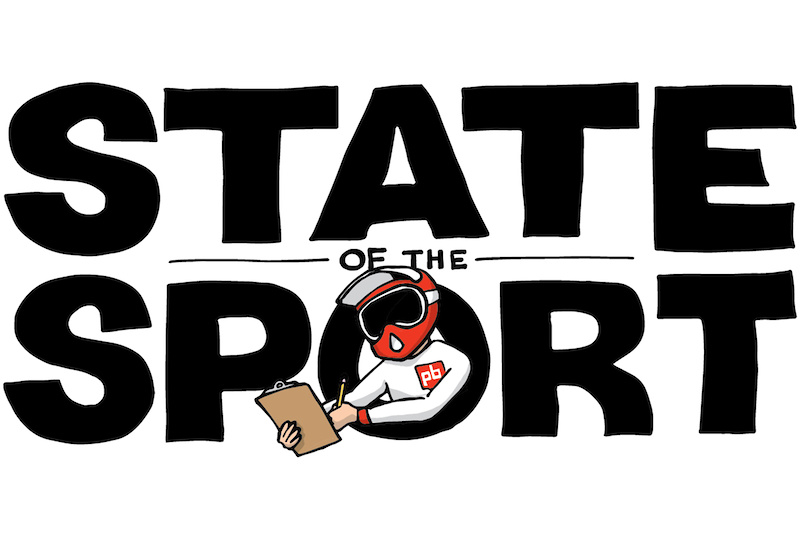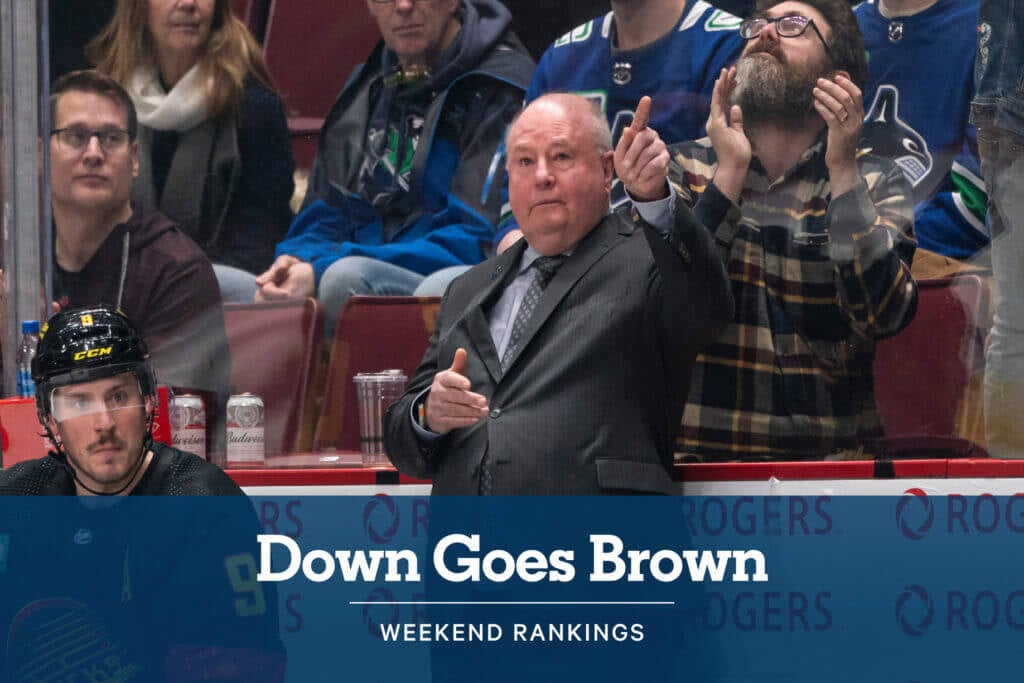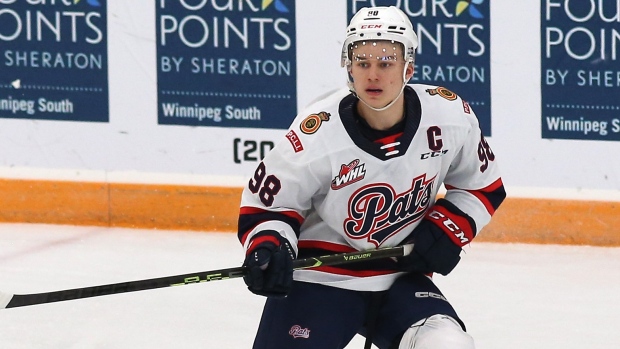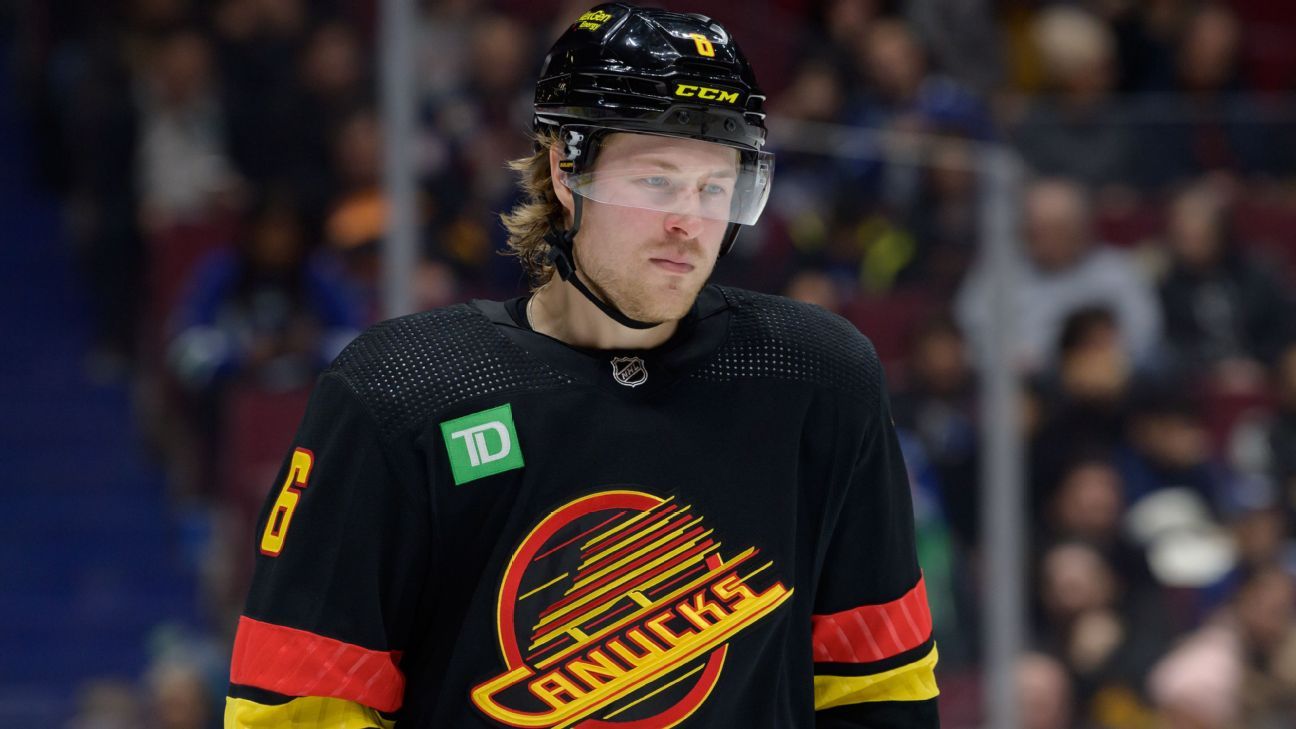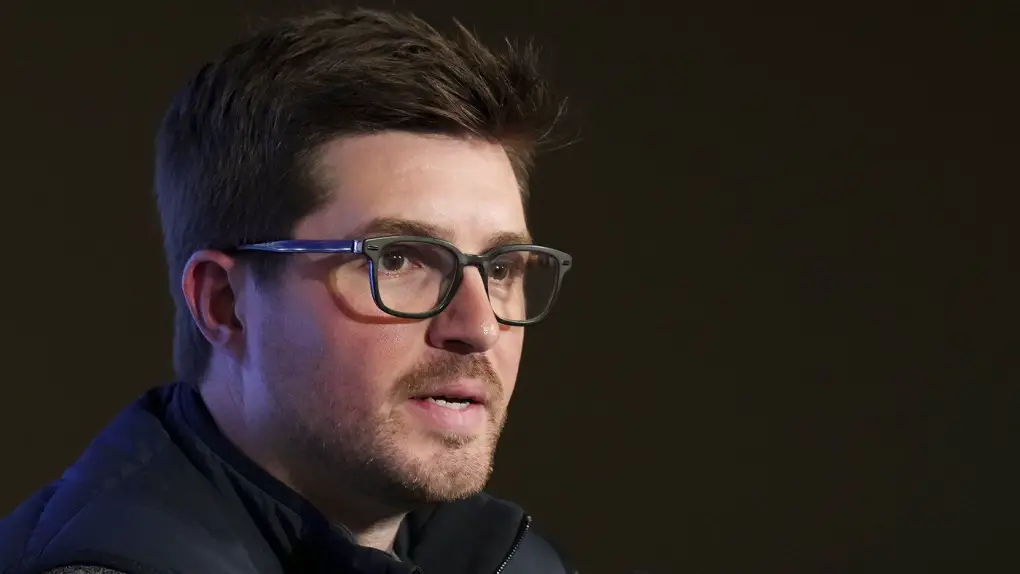Welcome to Scott Wheeler’s 2023 rankings of every NHL organization’s prospects. You can find the complete ranking and more information on the criteria here, as we count down daily from No. 32 to No. 1. The series, which includes in-depth evaluations and commentary from sources on nearly 500 prospects, runs from Jan. 9 to Feb. 8.
The Leafs’ system is defined by quantity more than quality. They still boast four legitimate prospects at the top, which lines up with the other teams ranked below them here (and some ranked in front of them), but it’s the sheer depth of C-plus and B-minus grade prospects that separates their group from the league’s weaker pools.
That’s a testament to the job they’ve done finding value with late-round picks and mining free agency, but it also speaks to the fact that they haven’t picked in the first round at the last two drafts. There’s also uncertainty surrounding the health of their last first-round pick, Rodion Amirov, following the discovery of a brain tumor last February.
The Leafs’ pool is thinnest on defence but boasts good depth on the wing and in net, with five goalies appearing in this year’s top 15.
2022 prospect pool rank: No. 15 (change: -3)
1. Matthew Knies, LW, 20 (University of Minnesota)
One of the fastest risers in the prospects world last season, Knies emerged as one of the top freshmen in college hockey last year and has picked up where he left off in his return for a sophomore season before he turns pro. While it must be said that he has had the benefit of great linemates in both of his seasons with the Golden Gophers, he has proved he belongs with them as well, which is a testament to both his own individual skill (he’s got one of the harder wristers outside the NHL) and the way his power game complements talented linemates (which Leafs fans, I know, are hoping is a foreshadowing of what’s to come given he’s a left winger).
Knies has a rare power-finesse blend to his game, where he can drop a shoulder, drive at you with his heavy 6-foot-3 frame, and overpower goalies with his shot, but he also executes his fair share of small-area plays. He’s got a bit of a hunch in his stride that really leans him out over his toecaps, which I’d like to see straightened out at least a little, but he’s got all of the makings of a modern power forward who can play an honest but talented game that excels on the wall as much as in the middle third.
He’s comfortable in control, he’s got great touch, he’s always working to keep himself in the play off of the puck, he’s got a strong two-way foundation, he’s hard to knock off pucks, and he understands how to play off of crowds to facilitate. There’s some underrated creativity to his game as well (he’ll execute the odd spin-pass or between-the-legs attempt at the post). It’s hard to make a play past him when he’s barrelling in on you on the forecheck, so defenders tend to just brace for impact. When there isn’t an opportunity to win a battle with his body, he’s strong on stick lifts and keeps his feet moving. He’s even strong holding onto pucks when others are trying to reach in on him or bump him along the wall on the cycle.
I expect him to become a good second-line scoring winger with some presence to his game (if not a third-line one at his floor).
2. Nick Robertson, LW, 21 (Toronto Marlies/Toronto Maple Leafs)
Injuries were the story of his junior career in many ways (they were part of the reason the Leafs got him where they did in the draft). They became the story of the start of his AHL career, and have now become the story of his attempts to solidify himself as a top-nine NHL winger. He’s had wrist, ribs, knee, fibula, and now shoulder issues.
Fortunately, when Robertson has been healthy, his career has progressed along a pretty steep incline towards the NHL. You’d hope that his skill set, statistical profile, and Sept. 11 birthday (which made him the youngest player in the 2019 draft) will still help limit the adverse effects of the injury bug.
When he’s on, he’s a noticeable shift-to-shift player with his energy to spare, a wrist shot as hard as any in the NHL when he loads it up (which does take him a little longer than most top shooters), skill in congested areas spinning off of checks and away from sticks, transition value as an eager transporter who likes to hold onto the puck, and forechecking value to keep plays alive because of his relentlessness.
Robertson has a pretty unique composition. His curl and drag release comes off his blade heavy and can cleanly beat goalies from mid-range. He’s got superb hands and footwork, helping adjust around closeouts, and playing under sticks or through feet. And then he’s also got some of the skills needed to complement that package and get the most out of his 5-foot-9 frame:
The fearlessness in puck pursuit (which can invite hard contact/injuries), the no backing down approach, and his feet are always moving to stay involved (he can actually occasionally chase the play a little too much) and get open off the puck. I’ve also liked (when healthy) the way he has opened up his vision to involve his linemates and take better advantage of his good playmaking feel in the AHL, so that he’s not so net-focussed and tunnel-visioned as a shooter.
I’d still count on a top-nine contributing floor and top-six scoring ceiling, either of which will be complemented by his work ethic and include PP2 upside. But it’s getting harder and harder to be sure of that because of the time missed and the time needed to re-find himself after it.
3. Fraser Minten, C, 18 (Kamloops Blazers)
Minten has impressed scouts NHL- and WHL-wide on a contending Kamloops the last two seasons, playing an important role on a loaded team up front. He’s a heady three-zone player who makes smart, calculated choices with the puck and can flash skill through his hands and playmaking when opportunities present themselves.
He’s got great spatial awareness and understands how to use the sheet and opposing coverage to his advantage both on and off the puck. He’s responsible and detail-oriented on the puck, and has a sixth sense for the way plays are developing and how he can problem-solve his way around them with it. He was also on the younger side of the 2022 draft, so he won’t turn 19 until July. I fully expect him to rise to the occasion in this year’s Memorial Cup (which Kamloops is hosting). He should also fit in as an important bottom-six player on Canada’s 2024 world juniors team in Gothenburg next year. His numbers don’t pop but he plays at a very high-level game-to-game, has created a lot of looks for himself this season, he’s a 56 percent guy in the circle this year, and he knows where to be and what to do when he’s on the ice.
Here’s Blazers assistant general manager Robbie Sandland on Minten from a recent conversation: “His game isn’t even about points. Like he’s so good 200 feet. Like relentless work ethic. He’s so reliable and his hockey IQ is off the charts. He just gets things and he just plays such a rounded, kind of pro-style game already. I feel like his game is just going to go to another level, I really do.”
4. Topi Niemelä, RHD, 20 (Kärpät)
At a glance, Niemelä’s numbers with Kärpät this season have taken a step back after his superb season a year ago saw him become the league’s second-most productive defenceman. And yet he’s generating shots at the highest clip of his career so far (3.5 per game this year to 2.9 per game last season), he’s still playing 19-20 minutes per game (same as last year), and he’s still a big part of an above-average team in an above-average pro league at 20 years old.
Niemelä is a poised, calculating, one-step-ahead player who makes the game look easy. He can comfortably quarterback a power play, he creates offence consistently at five-on-five, he’s an able defender, and he drives results with the consistency of his execution. Niemela’s ability to calmly take passes, beat the first layer, and then quickly identify a lane or move his feet to create one distinguishes him. His game is detailed but also smooth, driving results with smart decisions in all three zones.
He’s not overly aggressive, so you’ll rarely see him try to beat multiple people to force a play individually (like you might expect out of someone as productive as he is) but he’ll use whatever space he’s given as a tool to get better opportunities for himself or his teammates. While he’s not powerful through his stride or in his board battles, impressive footwork helps him open up and direct opposing plays to the outside, close gaps, recover from mistakes, or adjust across the offensive-zone blue line with the puck.
He knows exactly when to move, and attack, and take space. He’s so smart on exits, where he just makes subtle little plays with the puck on his stick to evade pressure, escape danger, and skate the puck out of the zone. He projects as a No. 4-5 at his ceiling and a No. 6-7 at his floor. I just don’t see him coming over to the AHL and not getting into the call-up conversation.
5. Nick Moldenhauer, C/RW, 18 (Chicago Steel)
After the start to his draft year went about as badly as it possibly could, Moldenhauer overcame illness and serious injury to emerge as one of the best forwards in the USHL in the second half, reaffirming the top prospect status. This season, in an effort to play an uninterrupted year before going to college, he has remained one of the top forwards in the USHL and has committed to play at the University of Michigan next fall.
He’s a high-energy worker who combines an engine that is always revved with an offensive toolbox that lacks dynamism but also gets B grades across the board. He’s a versatile Swiss Army knife who sees the ice at a high level, reads and anticipates play quickly, and makes his linemates better with his ability to go get pucks, be in the right place at the right time, and facilitate with his solid vision and playmaking instincts. He’s honestly a lot like Minten. He’s just a good, effective, intelligent hockey player. I don’t think he’s going to tear up college hockey as a freshman. He doesn’t have that kind of skill. But I fully expect that as he continues to get stronger that by the time he’s a junior he’s going to be one of the Wolverines’ best players and position himself to earn an NHL contract out of college.
He looks a step quicker this year than last, too. Watch No. 9 gather speed through his crossovers here.
6. Roni Hirvonen, C/LW, 21 (HIFK)
Hirvonen, who is already in his fourth productive pro season and only just turned 21 a couple of weeks ago, plays a game that can be a lot of different things. He can play a physically-engaged, scrappy, middle-lane style that plays off of his linemates, goes to the guts of the ice, and pounces opportunistically on chances around the net. But he’s also skilled enough to hang onto pucks, play on the perimeter, create for his linemates, evade pressure, navigate traffic, and make finesse plays in facilitation.
He’s got quick hands off of bobbles to correct and side-step closed gaps or navigate through traffic. He stays in battles to fight for possession and extend sequences more than you might expect out of a 5-foot-9 player (he’s sneaky strong). He has sound defensive instincts, can be counted upon to support the play, and can play multiple forward positions. He’s going to need to pick up a step to be the same player at the next level and contribute in a bottom-six role though (he gets caught in open ice a little too much, etc.), especially at his size.
The good news is he plays fast without being fast (which is definitely the Leafs’ type these days). The better news is that coaches love him for his hounding approach in puck pursuit, his engine, and the fact that he thrives in dirty areas at the top of the crease/along the boards. He’s always around it and knows how to use his body at the net front/in puck protection. His game should translate really nicely on North American ice, too.
7. Dennis Hildeby, G, 21 (Farjestad BK)
Drafted by the Leafs as a double-overaged and quickly signed, Hildeby is already one of the biggest (6-foot-6) heaviest (234 pounds) goalies in the sport. He’s also starting to develop a really nice track record, with a .928 save percentage in his first 20 SHL games across the last two years. After a bit of a slow start out of the gate this season, Hildeby has outplayed the team’s veteran starter Matt Tomkins since, going from backup to more of a tandem of late.
He can look a little sluggish when plays break down and he has to scramble and move a lot, but he more than makes up for that with his strong tracking, positioning, angles, reads and rebound control. There’s a lot to work with there and while it’s still early days in terms of sample size, he’s got the highest ceiling of the Leafs’ goalie prospects.
8. Joseph Woll, G, 24 (Toronto Marlies)
The story of this Marlies season so far, Woll returned from his latest in a long list of injuries (a shoulder injury this time) at the end of November and has played to a perfect 10-0-0 record since. After two up-and-down seasons to begin his pro career with the Marlies, last year represented a step forward before the injury in March and this season has marked his re-establishing himself as the top prospect he was for three years at Boston College and two seasons at the U.S. NTDP before. If either of Matt Murray or Ilya Samsonov get injured in the second half, he should now be the Leafs’ No. 3 again over Erik Kallgren.
Woll is a great kid who is universally well-liked. He uses a studious approach to the position and a solid foundation of size (he’s 6-foot-4) and athleticism to stay square to pucks, make the first save consistently, and maintain that control when plays break down and he’s asked to make two or three stops in quick succession.
His smarts between the pipes are his biggest asset. When he has struggled, it has been more with the speed of his game and his movements within it than technique. Now he’s trusting his reads, holding his lines, and letting pucks come to him again. With it, there is renewed hope that he can be the good organizational depth it looked like he was going to provide for a long time.
9. Ryan Tverberg, RW, 20 (University of Connecticut)
Tverberg, who first really demanded my attention at the CJHL Top Prospects Game in his draft year and was excellent down the stretch of that season to narrowly earn a seventh-round selection to the Leafs, has continued to follow a pretty unbelievable path. After a switch from Harvard to UConn during the pandemic, he has been the Huskies’ best forward in consecutive seasons for my money.
He has done it by playing a consistent shift-to-shift game built upon his work ethic, a smooth and fast skating stride, and good overall skill. He can make defenders bite with a shoulder fake at top speed, cut past them inside-out or cut through them with an outside-in fake, and his hands move in unison to help him position and adjust around coverage.
He has also grown rapidly (he’s now 6-foot and 190 pounds) after growing up as a tiny kid. He’s not a dynamic offensive-zone player but he plays to the middle of the ice, works hard, adjusts his speed and tempo effectively, and can finish plays from the home plate area. Whether or not he makes it, he looks like a great value pick at 213th and the kind of player who has earned an NHL deal and more opportunity — which he always seems to make the most of.
10. Ty Voit, RW, 19 (Sarnia Sting)
After losing his entire draft year to the OHL’s cancellation, the Leafs took a calculated gamble on Voit, a slick and diminutive, late-birthday playmaker who showed real promise as a rookie in Sarnia. The early results have paid off, with Voit going from Sting leading scorer (by 21 points!) last year to OHL leading scorer and assist man this year.
When the Sting score, it’s usually Voit who sets it up. He’s a crafty passer who will wait for coverage to open up one second and then make a series of quick give-and-go plays to set up a goal the next. His head is always on a swivel, even before he’s in possession, surveying his options. That cerebral nature to him allows him to softly move around the ice making plays and dissecting teams with perfect weight on his passes, and a silky first touch into his carries.
At 5-foot-9 and 150 pounds, there are concerns about whether his game will translate up as easily as he makes it look in junior though. He’s also gives a lot defensively at the OHL level already. I expect him to make a lot of plays and excel on an AHL power play. I do worry he becomes a bit of a AAAA guy ala Nic Petan, though. There’s no questioning his vision and poise at the junior level. He’s a lot of fun to watch and the Sting have loaded up for an OHL title run around him this year.
11. Nikita Grebyonkin, RW/LW, 19 (Amur Khabarovsk)
Maybe the best story in the Leafs’ prospect pool this season, Grebyonkin — drafted as an overager in the fifth round in 2022 after he was one of the MHL’s leading scorers last season — began the year with Magnitogorsk’s KHL team, made a move to Khabarovsk in search of greater opportunity, climbed quickly through Russia’s second-tier VHL, made his debut with Khabarovsk at the end of October, and has played inside its top six and on its power play ever since. At the time of writing this, his 17 points lead all under-20 players in the KHL so far this season.
Grebyonkin is a rangy, 6-foot-2 left-shot right winger with an awkward-looking upright stance that makes him easy to push off-balance, slick hands, and a superb playmaking feel out of carries as a passer. If he can fill out, smoothen out his skating (which isn’t slow at all but just looks a little weird), and develop his shot into more of a weapon (he gets it off quickly), there might be a really intriguing player there. He sees the ice really well and has deft skill in possession for a 6-foot-2 player.
Once he (No. 17 in blue) starts to attack like this a little more, he’ll unlock some layers. He’s got a path to complementary NHL winger with the right development and patience.
Villeneuve’s one of those players who is at his best when he lets the game come to him but can also stray from that and turn into a player you notice a lot for good and bad reasons because he’s trying to involve himself a little too much. There are times when he wants to join every rush and walk every line and you realize that he doesn’t necessarily have the skating (though this skill took too much flack coming up and has really smoothed out, even if his feet can still trail his body in straight lines) to be that guy. There are times when he wants to close every gap and his crossovers can look smooth through neutral ice to make the stop on one play but his timing is off on the next because he misread the carrier. It can be a bit of a roller coaster. He has over the last year and a half with Saint John (including in the Memorial Cup) and now the Marlies, begun to strike the right balance. I think there were also times, as with his skating, where his defensive zone results, which were quite strong on a team that played loose, were often overlooked as well. His play with the puck was also underrated because of the contrast to a teammate and sometimes-partner Jeremie Poirier’s high-end skill package in Saint John.
Villeneuve is a confident, capable playmaker who can lead exits and entries, manage the point, and execute through seams in his own right. He’s got some vision and creativity in his own right too. His processing time can at times take him a split second too long to read and react to the play in front of him, but I think he has made progress on that front, and he has plenty of other redeeming tools (soft and hard, including a 6-foot-2 frame). When he plays quickly and trusts his instincts instead of hesitating, he’s an effective defenceman with some new-age traits. I fully understand why the Leafs development team made the investment in what was a quick entry-level deal for a fourth-round pick and I’ll be interested to see where he’s at at 22.
13. Keith Petruzzelli, G, 23 (Toronto Marlies)
After a strong start to his pro career in the ECHL last year, Petruzzelli’s transition to the AHL has been more of a mixed bag this season. He has stolen some games of late and played really well early on, but he also laid some eggs in between. Petruzzelli is a towering but lanky 6-foot-6 goalie who has struggled to put on weight over the years and is just going to have to make it work with the frame he has long-term. He has, to his credit, also made a lot of progress athletically over the years (he’s a long way from where he was when he started at Quinnipiac). Despite his size, Petruzzelli doesn’t rely on just playing the challenging, blocking style that most goalies with his frame do. His biggest strength is the way he reads and anticipates plays so that he knows where shots are going and gets to slot passes early. He does a good job seeing over net-front traffic, playing the puck, and staying compact in the net for his size (he’s not an overly aggressive goalie). He has never been the quickest or most fluid goalie in the net, and has worked on his skating, but if that can come he’s got the stuff to potentially make it as a backup or No. 3.
14. Artur Akhtyamov, G, 21 (Neftyanik Almietevsk)
I liked Akhtyamov in his draft year and wasn’t surprised when the Leafs used their now-annual pick on a goalie on him even though NHL Central Scouting didn’t rank him. His track record in the MHL and now VHL lines up with the Russian goalies that tend to progress up the ranks. He’s a lean 6-foot-1, which does come with some limitations, but he’s quick in his net, his positioning is sound and aggressive, and he rarely gets beat with the high glove or high blocker despite that small(ish) frame. I’m not prepared to bet he’s going to be an NHLer but I’m confident in saying he’s a good young goalie and he has shown me nothing to suggest he won’t climb the next rung to the KHL/AHL. Save percentages tend to skew towards the higher end in Russia in general, but he looks the part of his numbers and has played really well behind some bad teams over the years.
15. Vyacheslav Peksa, G, 20 (Ak Bars Kazan)
Before last season, I hadn’t given Peksa much time because whenever I made an effort to watch Kazan’s MHL team, it was to watch the name above him on this list. Coincidentally, Akhtyamov has now left Kazan and it appears the organization is more committed to bringing Peksa along. But Peksa, who is similar in size and different in style to Akhtyamov, has impressed me these last two years. He’s an athletic, competitive, quick-on-his-feet, move-to-pucks goalie who fights to stay in plays and has doesn’t over-busy himself when he doesn’t have to. If I had to guess, I’d guess that the Leafs only end up signing one or none of Akhtyamov or Vyacheslav Peksa (you can’t sign ’em all!) but I’d give them both strong consideration if they can make room with the Marlies/Growlers when the time is right/if they’re willing to come over and give it a go. There’s no rush though, either. They can wait until they’re 23-24 and see if they’re both capable of establishing themselves in the KHL, as teams often do.
The Tiers
Each of my prospect pool rankings will be broken down into team-specific tiers in order to give you a better sense of the talent proximity from one player to the next (a gap which is sometimes minute and in other cases quite pronounced).
The Leafs’ prospect pool breaks down into three tiers divided as such: 1-4, 5-10, 11-15.
There were eight prospects (the most so far and one of the higher totals of the entire series) left off the list that were considered for that final tier, highlighting that depth of tweener prospects that I alluded to off the top.
They were forwards Semyon Der-Arguchintsev, Veeti Miettinen, Brandon Lisowsky, Dmitri Ovchinnikov, Braeden Kressler, and Joe Miller, and defencemen Mikko Kokkonen and Mike Koster. Miettinen’s a player I’ve always been a fan of but hasn’t taken the steps forward that he needed to in order to stay on the list.
Forwards Mikhail Abramov and Pavel Gogolev fell out of consideration.
|
Rank
|
Player
|
Pos.
|
Age
|
Team
|
|---|---|---|---|---|
|
1 |
Matthew Knies |
LW |
20 |
U. of Minnesota |
|
2 |
Nick Robertson |
LW |
21 |
Marlies/Leafs |
|
3 |
Fraser Minten |
C |
18 |
Kamloops |
|
4 |
Topi Niemela |
RHD |
20 |
Karpat |
|
5 |
Nick Moldenhauer |
C/RW |
18 |
Chicago |
|
6 |
Roni Hirvonen |
C/LW |
21 |
HIFK |
|
7 |
Dennis Hildeby |
G |
21 |
Farjestad |
|
8 |
Joseph Woll |
G |
24 |
Marlies |
|
9 |
Ryan Tverberg |
RW |
20 |
UConn |
|
10 |
Ty Voit |
RW |
19 |
Sarnia |
|
11 |
Nikita Grebyonkin |
RW/LW |
19 |
Khabarovsk |
|
12 |
William Villeneuve |
RHD |
20 |
Marlies |
|
13 |
Keith Petruzzelli |
G |
23 |
Marlies |
|
14 |
Artur Akhtyamov |
G |
21 |
Almetievsk |
|
15 |
Vyacheslav Peksa |
G |
20 |
Kazan |
(Photo of Matthew Knies: Russell / Toronto Star via Getty Images)
#NHL #prospect #pool #rankings #Toronto #Maple #Leafs
